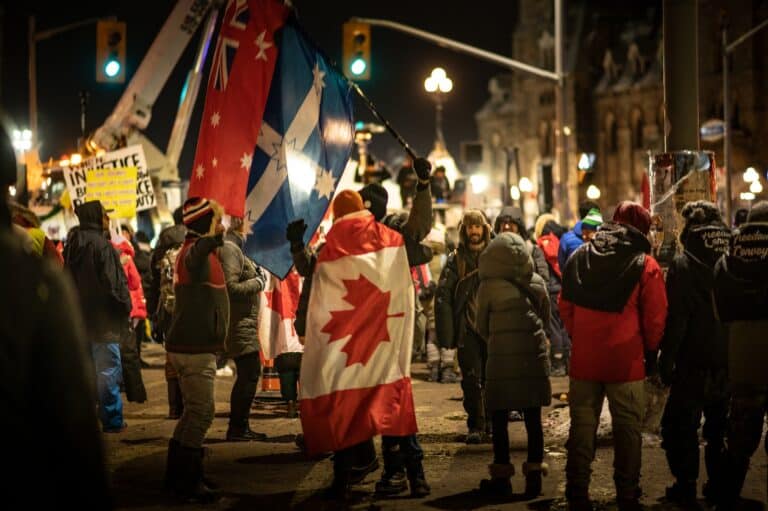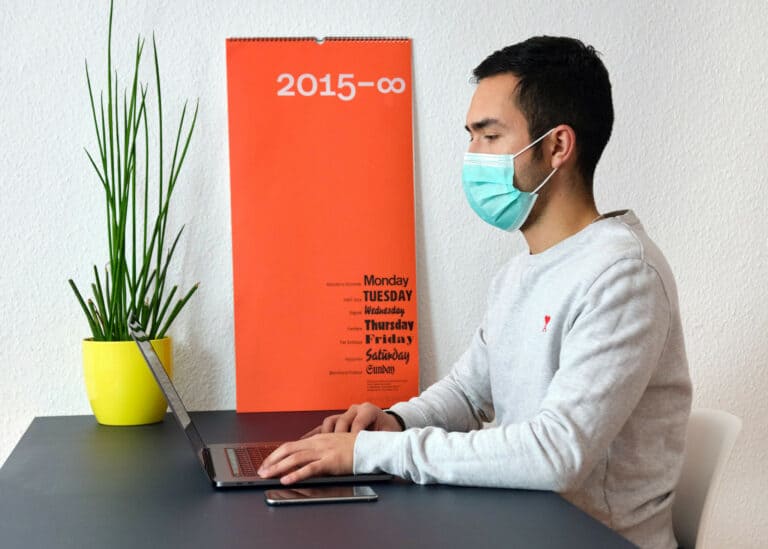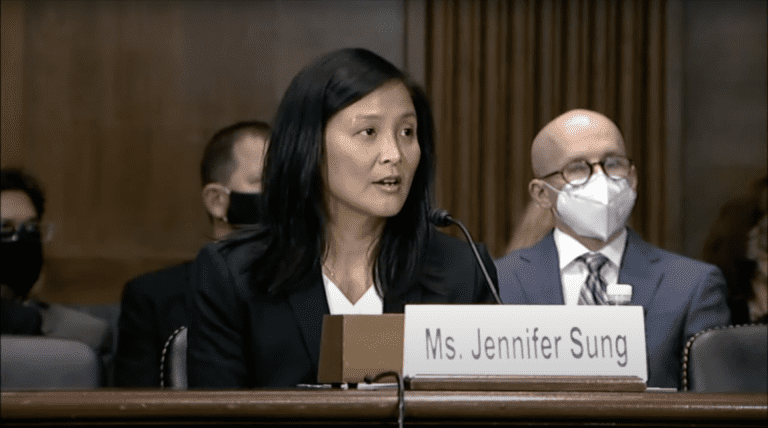
Charlotte Garden is the Julius E. Davis Professor of Law at the University of Minnesota Law School. She is a co-author of casebooks in Labor Law (with Richard Griffin, Joe Slater, and Anne Marie Lofaso), and Employment Law (with Mark Rothstein, Lance Liebman, Kimberly Yuracko and Paul Secunda). Professor Garden’s scholarly articles have appeared in the University of Pennsylvania Law Review, Emory Law Journal, Boston University Law Review, George Washington Law Review, Fordham Law Review, and the William & Mary Law Review. In 2019, Cambridge University Press published Professor Garden’s co-edited volume Cambridge Handbook on American Labor Law: Reviving American Labor for a 21st Century Economy (with Richard Bales).
For many of us, our main contribution to the fight against the coronavirus pandemic is staying home. Many governors have issued orders to “shelter in place,” borrowing the term from natural disaster response. That is, stay where you are, leave only if absolutely necessary. This post considers what it would mean to apply the same lens to work – how would we regulate work if our goal was to allow people to stay safe in their jobs, at least until the pandemic is over?
Sheltering in place works well when the shelter is adequate – when it meets its occupants’ needs for a healthy and safe environment, plus food and other supplies. But some shelters are inadequate – their occupants may face acute dangers if they stay, and more diffuse ones if they leave. So the inadequacy of anyone’s shelter should concern everyone – both because others’ welfare is intrinsically important, and because too many people leaving home during a pandemic will harm public health.
We might think about work in the same way. Unemployment, like inadequate shelter, leads to a list of harmful effects that include public health consequences. This link between unemployment and public health is even more immediate now. Particularly where unemployment insurance and other financial supports are slow to reach those who need them, newly unemployed workers could find themselves unable to afford to stay safe at home, and/or pushed into less safe work.
Why does it matter if workers can stay safe in their jobs?
The coronavirus has led to a tsunami of unemployment – more than 26 million people sought unemployment insurance benefits in the last five weeks. Even well-run state unemployment agencies are straining under the pressure – and some states have hollowed out their unemployment systems, meaning even longer waits for payments.
But we should also think about what will happen once it is safe to begin to re-open. Some workers who are now out of work might be able to go back to their jobs – but not every job will come back, or come back at the same time. This could mean a scramble for work once parts of the economy reopen, especially if unemployment benefit levels are too low, or are running out.
Who benefits from a scramble? First, unscrupulous employers, who will no doubt find reasons to squeeze out “troublemaker” former workers – for example, those who have advocated for equal treatment, better pay, and improved safety. Second, applicants who have structural advantages in looking for jobs, and who are less likely to face discrimination because of their race, gender, disability, or other personal characteristics. The result, in a worst-case scenario, would be an economy that more deeply entrenches all forms of inequality, and that makes work even more precarious for many.
We could avoid many of these consequences if we prioritize keeping people in their jobs now, whether or not they can actually work. Allowing people to take shelter in their jobs would increase stability and help head off a scramble for re-opened jobs, and it would also alleviate the crush of unemployment claims by keeping workers on employers’ payrolls.
What would allow workers to stay safe in their jobs?
For businesses that are closed because of the pandemic, the US could adopt a paycheck security policy, as Senate and House Democrats (and Senator Sanders) have proposed, and as a number of countries have done. Under these proposals, workers would stay employed – and retain their employer-provided health insurance – even when they cannot work, with government backstopping employers’ payroll costs. One key here is that wage replacement levels must be high enough to allow people to continue to pay their bills – thus, Rep. Jayapal’s proposal would cover 100% of payroll up to an annual salary of $100,000 per worker; the Senate Democrats’ proposal is only slightly less generous, and would be capped at $90,000 per furloughed worker. (In contrast, Senator Josh Hawley has proposed capping wage-replacement at the national median wage, which the Economic Policy Institute calculated was $19.33/hour in 2019; that amount would undoubtedly be too low to allow many families to meet their ongoing expenses.)
For essential workers, staying safe in a job has a more literal meaning. By definition, these workers perform jobs that allow others to shelter at home in safety and comfort, and so their interests in job stability have both individual and public aspects. But recent events have underscored that doing essential work doesn’t always equate to job security, nor are essential businesses always high-road employers. Therefore, rules aimed at allowing workers to stay in their jobs would prevent arbitrary or bad-faith firings, and promote acceptable working conditions, particularly with respect to workplace safety.
A policy aimed at allowing essential workers to stay safe in their jobs would have two main components. First, workers should not be fired for arbitrary reasons. This can be accomplished through “just cause” protections from termination, which mean workers cannot be fired unless their employers has a good reason. Second, workers should not have to choose between unacceptable working conditions and quitting.
Ensuring acceptable working conditions means defining what counts as acceptable, and also creating a reliable enforcement mechanism. Workers should have a collective voice in determining what is acceptable – but at minimum, workplaces must be safe, free of harassment and discrimination, and must pay a living wage. Further, workers should have access to a quick and reliable method of remediating workplace problems and enforcing acceptable standards.
Widespread maintenance of enforceable minimum standards could be achieved in multiple ways. For example, in unionized workplaces, a union first bargains over what working conditions are acceptable, and then enforces the resulting agreement. In non-union workplaces, minimum standards laws currently set the (often too-low) bar for what qualifies as acceptable working conditions – but barriers to both public and private enforcement mean that employers can easily fall below even those standards.
A better alternative, drawn from the Clean Slate for Worker Power recommendations, would be to create graduated workplace representation rights. At minimum, Clean Slate’s recommendations promise one elected workplace monitor for every 500 employees. Importantly, these monitors would be trained to understand employers’ legal obligations, and they would have a right to access relevant company records, to inspect the workplace, and to attend disciplinary meetings. This alone could increase employers’ compliance with the labor and employment law, by increasing the probability that violations will be caught. Beyond that, a minority of workers could elect to establish a works council, or to be represented by a members-only union. Each “level” of representation would go further to realizing the promise of acceptable workplace standards that are both meaningful and readily enforced.
As workers and communities contemplate the long road to a post-coronavirus recovery, it’s more important than ever for policymakers to anchor their responses around solutions that provide economy security and stability to workers. Congress should respond to the dual public health and economic crises gripping this country by asking what policies would keep the most people attached to their jobs, whether or not they are now able to work. This approach responds to the needs of the current moment, but also avoids a race to the bottom when the economy reopens.










Daily News & Commentary
Start your day with our roundup of the latest labor developments. See all
July 18
Trump names two NLRB nominees; Bernie Sanders introduces guaranteed universal pension plan legislation; the DOL ends its job training program for low-income seniors; and USCIS sunsets DALE.
July 17
EEOC resumes processing transgender workers' complaints; Senate questions Trump's NLRB General Counsel nominee; South Korean unions strike for reforms.
July 16
The U.S. Department of Health and Human Services lays off thousands of employees; attorneys for the Trump Administration argue against revealing plans to reduce the workforce of federal agencies; and the Fourth Circuit grants an emergency stay on the termination of TPS for thousands of Afghans.
July 15
The Department of Labor announces new guidance around Occupational Safety and Health Administration penalty and debt collection procedures; a Cornell University graduate student challenges graduate student employee-status under the National Labor Relations Act; the Supreme Court clears the way for the Trump administration to move forward with a significant staff reduction at the Department of Education.
July 14
More circuits weigh in on two-step certification; Uber challengers Seattle deactivation ordinance.
July 13
APWU and USPS ratify a new contract, ICE barred from racial profiling in Los Angeles, and the fight continues over the dismantling of NIOSH